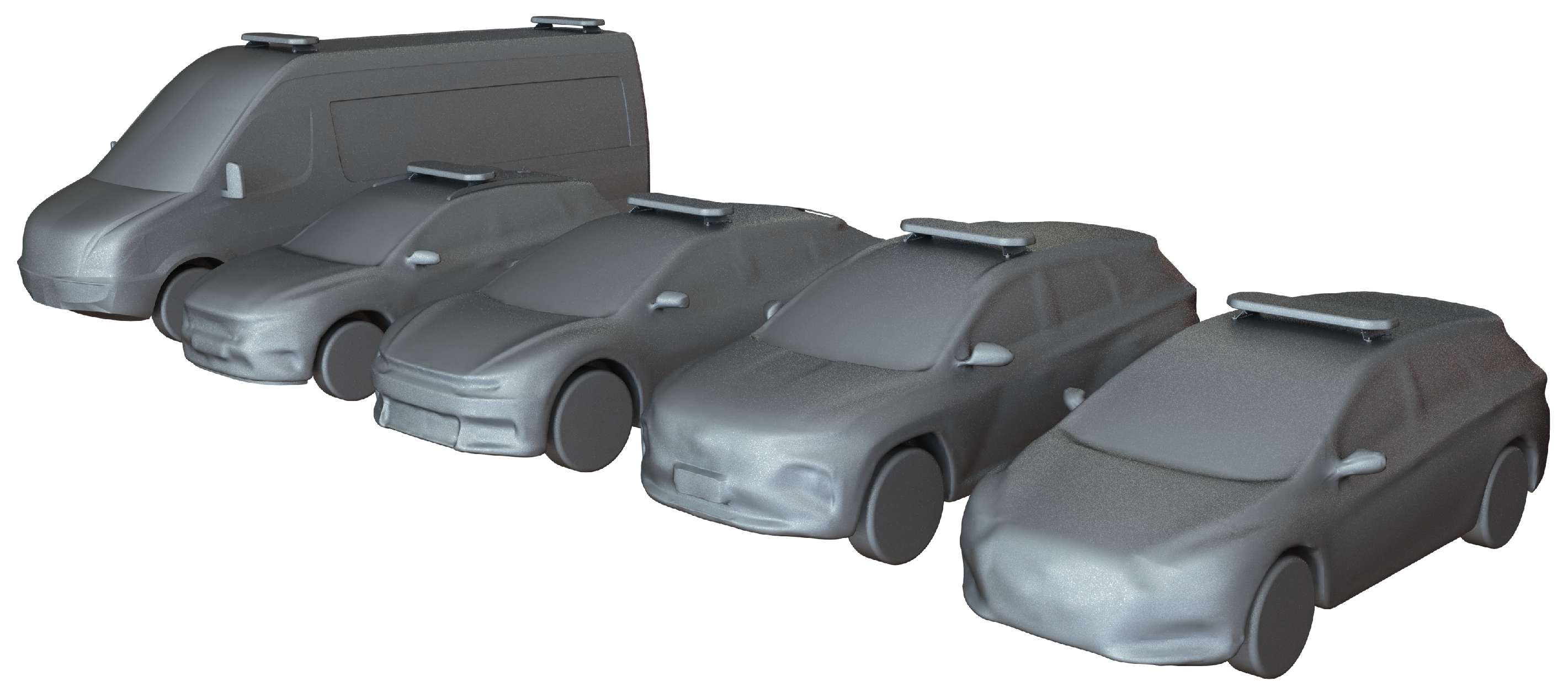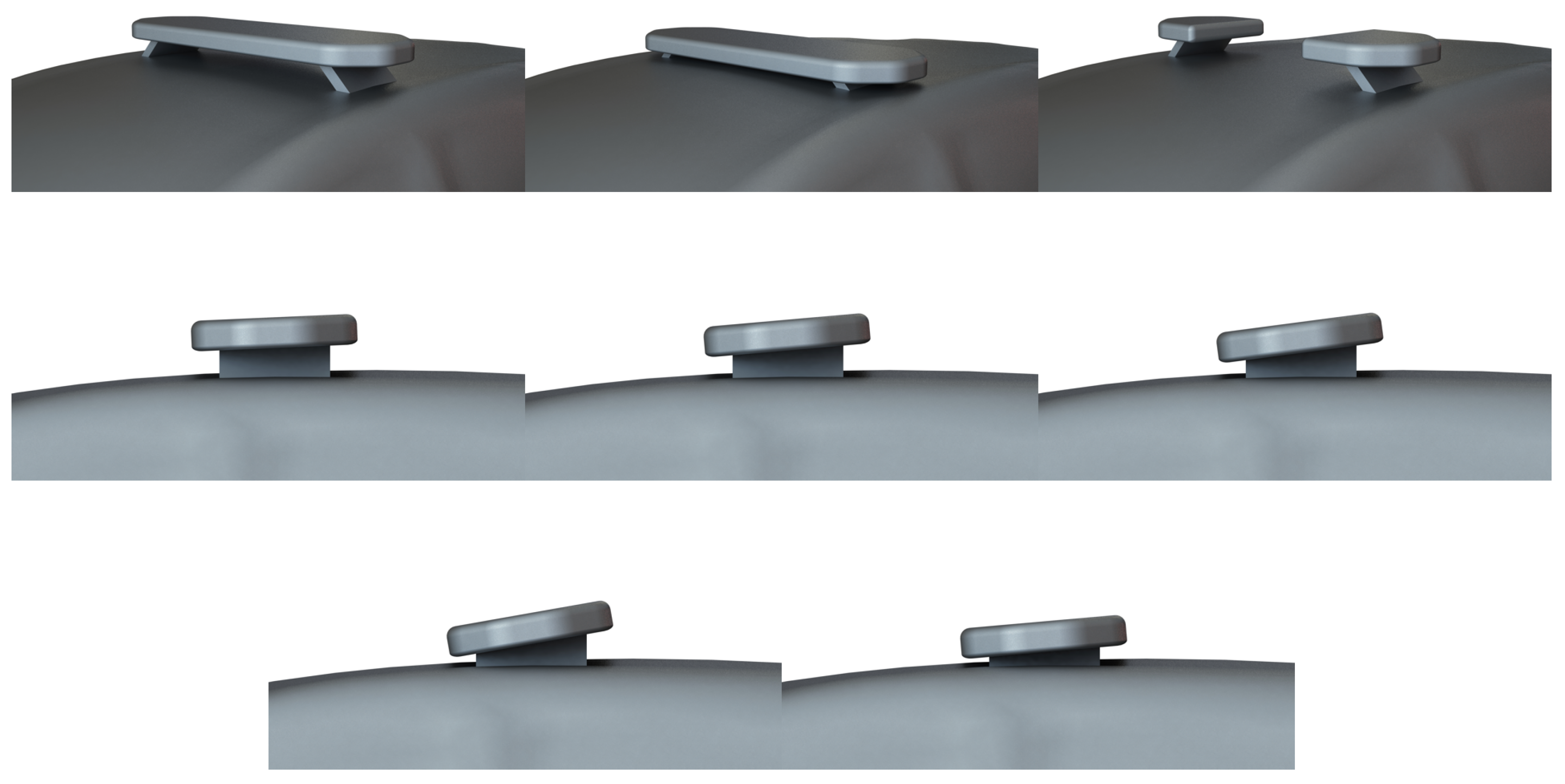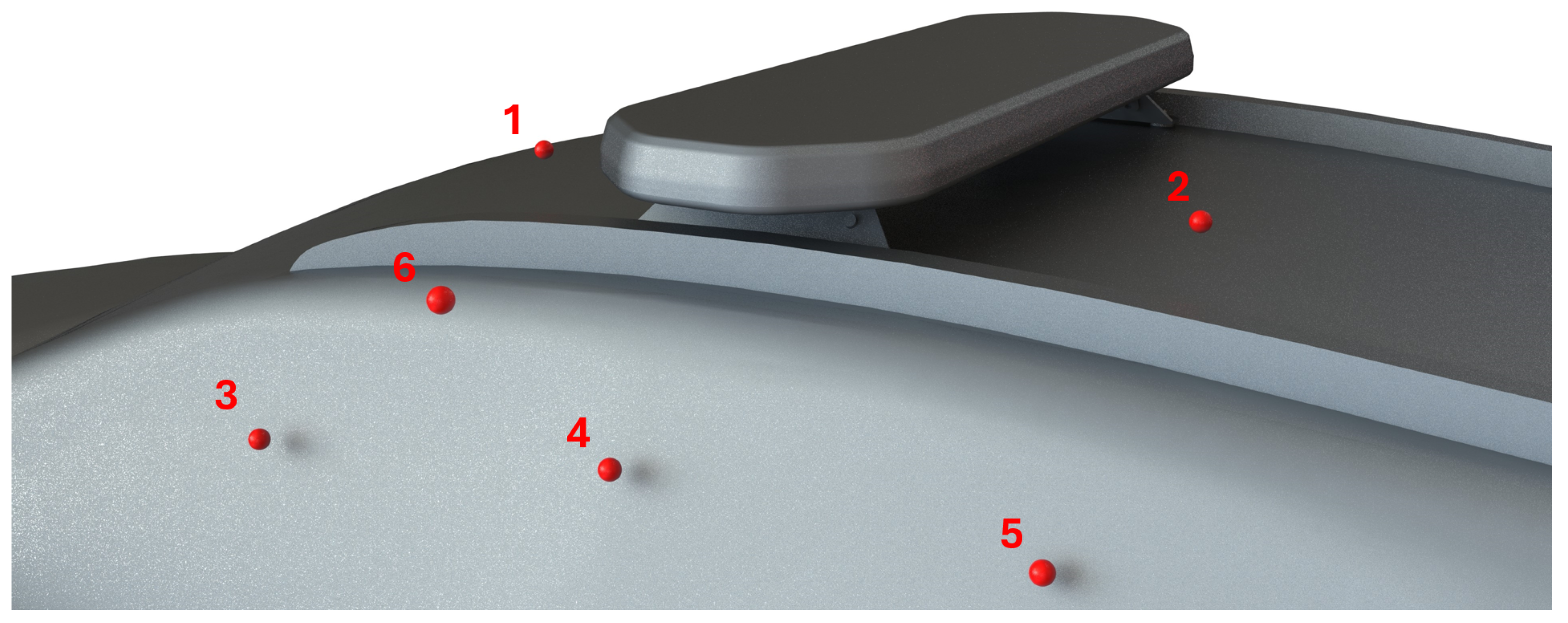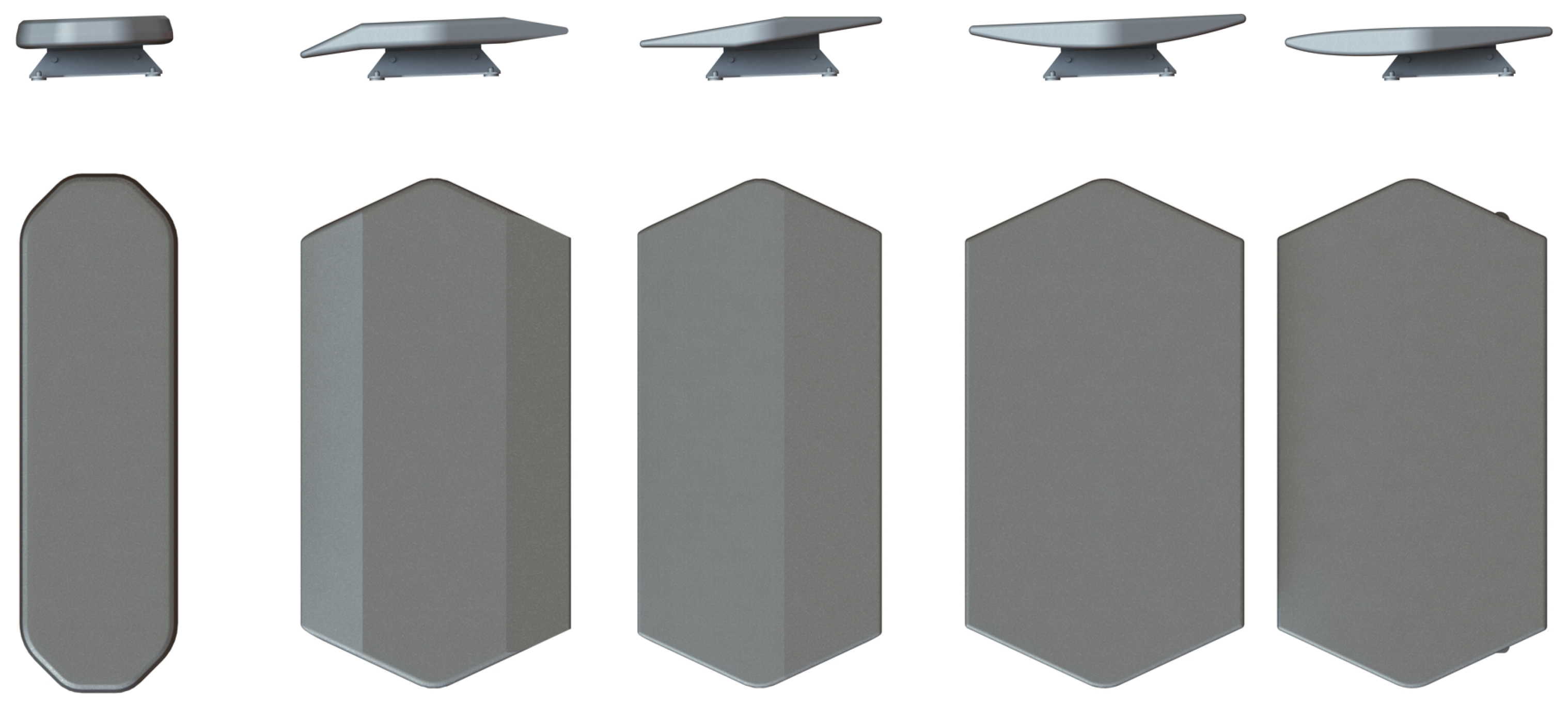3.1. Governing Equations
The modelling of airflow over ground vehicles can be effectively accomplished through a continuum approach, focusing solely on macroscopic interactions. In this context, each fluid element represents the average behaviour of numerous fluid particles across both space and time. Air was modelled as an isothermal Newtonian fluid with constant viscosity and density. The constant density assumption was justified as the investigated flows had Mach numbers below 0.3, minimising compressibility effects. The governing equations that form the basis for CFD simulations are the Navier–Stokes equations (Equations (
1) and (
2)), which are derived from the principles of mass and momentum conservation. For steady incompressible flow, the transient term goes to zero in Equations (
1) and (
2). The body force term
is also set to zero. In Equations (
1)–(
5),
is the velocity component in the
direction,
is the fluid density,
P is pressure,
t is time, and
is viscosity.
These two equations are then decomposed into fluctuating and mean components, as per Equation (
3), to obtain the Reynolds Averaged Navier–Stokes (RANS) equations [
12]. The CFD results detailed throughout this article were realised by using ANSYS Fluent, which solves the Reynolds Averaged Navier–Stokes (RANS) equations detailed below in Equations (
4) and (
5) with the help of turbulence models such as the
SST model [
13].
k is the turbulent kinetic energy, and
is the specific rate of dissipation in this two-equation turbulence model.
While RANS simulations are still an industry standard for aerodynamic simulations of ground vehicles in a time-efficient manner, hybrid large eddy simulations (LESs) are becoming increasingly popular due to advancements in computing power and the improved correlations seen between their results and wind tunnel data. Hybrid LES works by applying a RANS formulation in the boundary layer and then applying the LES formulation outside in the mixing layer and in regions where the flow is detached from the vehicle. Where a high number of configurations/runs are required, the computational expense associated with an entirely hybrid LES approach becomes too high, as each simulation can require more than 10 times the computational time required for a RANS simulation [
14,
15], as was the case for this study. Therefore, hybrid LES can be used as a verification method for a large number of RANS simulations by simulating only a short number of runs using hybrid LES and comparing the results against their corresponding RANS equivalents. One of the best hybrid-LES approaches available is Stress-Blended Eddy Simulation (SBES), which is a proprietary model by ANSYS. The model works by blending the turbulence stress tensor according to Equation (
6) [
16]. Here, the underlying RANS and LES models are unaffected, and in principle, any two models can be combined. If both models are based on eddy viscosity concepts, the formulation can simplified as shown in Equation (
7) [
16]. The
shielding function is where the main complexity of the model exists, and details on how it works are undisclosed by ANSYS. The main advantage of SBES over other methods is its ability to rapidly transition between RANS and LES, giving rise to clearly distinguishable RANS and LES regions [
16].
Aerodynamic noise generation related to road vehicles results from three different noise generation mechanisms. Mass flows through leaks and small openings (monopoles), impulses on surfaces due to pressure fluctuations (dipoles), and from turbulent free flows such as in the wake of a vehicle (quadrupole). Dipoles are the main source of noise in road vehicles, as quadrupole sources have low noise emission and monopole sources are eliminated for well-sealed vehicles [
17]. Note that the acoustic power of a dipole grows with the sixth power of its speed [
17]. This is particularly important for add-on parts that cause the flow to speed up, for example, as the flow passes underneath a lightbar or around a wing mirror. Predicting far-field noise requires a transient simulation, which has the underlying need for a hybrid-LES approach, to provide reliable predictions of flow fluctuations, which can be used to predict sound emission from sources such as vehicle panel work, which can then be received in the far field with a designated receiver.
The equations under pining aeroacoustics start from Lighthill’s aeroacoustic analogy [
18], in which a wave equation is derived from the compressible Navier–Stokes equations. This can be seen in Equation (
8), where the right-hand side represents the source terms. Equation (
9) is known as the Lighthill stress tensor, which has been approximated for the conditions of a low Mach number and High Re such that viscous effects and density fluctuations can be neglected. Additionally, isentropic and constant density flow is assumed.
Following on from this, the Ffowcs Williams and Hawkings model [
19] was developed and can be used for the prediction of far-field noise. The equation behind the model is shown in Equation (
10). The function
defines the mathematical surface enclosing all sources outside of which (
) the solution is desired.
represents the velocities of surface
f,
is the Dirac function,
is the Heaviside function, and
c is the far-field sound speed. The right side represents the sources, with the first being the quadrupole, the second being the dipole, and the last term being the monopole. Equations (
11) and (
12) outline the formulation for
F and
Q in the dipole and monopole terms, respectively.
Force measurements for the simulated geometry are produced in Fluent once the pressure is calculated at each cell in the vicinity of the geometry. It is common practice when designing and comparing vehicles to express the forces and moments on a vehicle in terms of dimensionless coefficients. The formulas for the two main force coefficients used throughout this article are detailed in Equations (
13) and (
14).
and
are the drag and lift coefficients, respectively. “
V” is the free-stream velocity, while
and
are the drag and lift forces, respectively, which are computed from the CFD simulations. The “
A” term in the formulas represents the projected frontal area of the vehicle. Note that a 0.001
change is referred to as a 1 drag count change.
























